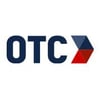
OTC Insights Team
Established in 1963, OTC Industrial Technologies (Ohio Transmission Corporation) is one of the largest industrial distributors & service providers in the United States. We're committed to seeing industrial operations advance through expert technical solutions & unmatched support using our years of experience.
As sustainability becomes a driving force in every industry, manufacturers face increasing pressure to reduce their ecological footprint. Traditional solvent-based coatings can emit high levels of Volatile Organic Compounds (VOCs), contributing to air pollution and posing health risks to workers. In response, many facilities are turning to eco-friendly industrial coatings like water-based or powder coatings, to meet tighter regulations and consumer demand for greener production.
At OTC Industrial Technologies, we’re committed to helping our clients navigate this shift toward sustainable manufacturing. Our advanced finishing and dispensing solutions reduce VOC emissions, waste, and energy usage, Empowering businesses to optimize performance while reducing environmental impact.
What Makes an Industrial Coating Eco-Friendly?
Eco-friendly industrial coatings minimize or eliminate hazardous components that can harm the environment or pose risks to workers. Key characteristics include:
- Low- or zero-VOC content
- Reduced hazardous air pollutants
- Fewer toxic ingredients
In many regions, there are specific VOC thresholds that coatings must meet to be considered environmentally friendly.
Understanding Volatile Organic Compounds (VOC) Thresholds and Regulations
VOCs are carbon-based chemicals that easily become vapors or gases at room temperature. When emitted in large quantities, they contribute to smog, ground-level ozone, and other air quality problems. Various regulatory bodies, such as the U.S. Environmental Protection Agency (EPA) and the European Union, set maximum allowable VOC thresholds for different industries. Meeting these VOC standards not only supports a healthier environment but also simplifies permitting processes and ensures compliance with local regulations.
VOC Content and Worker Safety
Eco-friendly industrial coatings that fall under low VOC coatings or zero-VOC categories offer substantial advantages for worker safety. When workers are exposed to fewer airborne toxins, workplace conditions become safer and healthier. Additionally, facilities can often reduce the complexity of their air-handling systems and personal protective equipment requirements, leading to lower operational costs over time. By investing in low or zero-VOC coatings, organizations can create a culture of safety and responsibility that benefits both employees and the community.
Powder Coating vs. Liquid Coating: Which Is More Sustainable?
When upgrading finishing systems, manufacturers often choose between powder and liquid coatings. Both have sustainable advantages, depending on production needs.
Powder Coating – Why and When it’s Sustainable
When your production doesn’t require quick color changes and your substrates tolerate thermal cure, powder can offer one of the cleanest overall footprints due to:
- Virtually VOC-free - though not literally zero, powder coating is often praised because it emits negligible VOCs, reducing air pollution concerns, and supporting powder coating sustainability.
- Overspray reclaim - excess powder can be collected and reused, minimizing material waste.
- Robust films - strong resistance to chipping, abrasion, and corrosion performance, reduce rework and repaints.
- Wide use of applications - widely used on wood/MDF and metal goods; not used in automotive OEM topcoat lines.
Powder coating requires higher bake temperatures, but its recyclable overspray and near-zero VOC profile make it a strong sustainability option.
Liquid Coating – Why and When it’s Sustainable
- Lower cure temps - Liquid coatings may cure at lower temperatures than powders, saving on energy costs.
- Fast color change – reduces purge waste and downtime; around 10 seconds in the automotive industry, and 30-60 seconds in other industries.
- VOC content - Traditional solvent-based liquid coatings can have higher VOC content, but water-based coatings dramatically reduce VOC emissions.
Overspray is more difficult to reclaim, so there's generally more waste with liquid systems compared to powder coatings.
Advantages of Water-Based Coatings in Sustainable Finishing
Water-based coatings are a leading alternative to solvent-based solutions. By using water as the primary solvent, these coatings can significantly decrease hazardous emissions. Here are a few benefits to consider:
- Reduced VOC Emissions: Lowers overall environmental impact and supports regulatory compliance
- Improved Worker Safety: Emits fewer fumes and lessens toxic exposure on the shop floor
- Easier Disposal: Spent water-based materials often require less stringent disposal procedures than solvent-based waste
- Enhanced Durability: Modern formulas of water-based industrial coatings often match or surpass the performance of solvent-based counterparts
Efficiencies in Curing Process for Powder Coating and Water-Based Coating
Curing is an essential step in finishing and a major factor in energy use. Selecting the right curing process can optimize energy consumption, lowering operational costs while supporting sustainability goals.
- Powder coatings: Typically require higher cure temperatures (325–400°F). However, new low-temp and UV/IR options reduce energy demand while still providing negligible VOC emissions and reclaimable overspray.
- Water-based coatings: Usually cure at lower temps, lowering energy use. Some formulas dry at ambient conditions, though drying times may be longer.
Both methods offer energy-efficient options when paired with the right curing technology.
Strategies for Sustainable Finishing System Design
Building a sustainable finishing system goes beyond eco-friendly coatings. Facilities should consider:
- Booth Airflow: Optimized airflow can reduce the amount of energy needed to maintain ideal conditions inside the spray booth.
- Automated Systems: Robotics and automated spraying equipment can improve consistency and reduce human error, cutting down on waste.
- Spray Control Technologies: Automated monitoring of fluid pressures, nozzle performance, and spray patterns ensures that the right amount of coating is applied every time, reducing waste.
Additionally, an eco-friendly spray booth can be designed with energy recovery features that help recapture and reuse heat, further reducing the environmental footprint.
If you are looking to evaluate your finishing system, OTC provides turnkey finishing & dispensing systems that are expertly engineered for efficient material use, minimizing waste, and optimizing productivity.
Regulations & Certifications Important for Sustainable Coating
Staying compliant with VOC and sustainability requirements is critical. Key oversight includes:
- EPA Coating Regulations: The U.S. Environmental Protection Agency sets national emissions standards and maintains oversight through state-level enforcement.
- OSHA: The Occupational Safety and Health Administration enforces worker safety standards, including guidelines for exposure limits to hazardous substances.
- Local and Regional Air Quality Boards: Many states and municipalities have additional regulations or incentive programs for reducing air pollutants.
- Eco-Labels and Certification Bodies: Groups like Green Seal or UL Environment’s GREENGUARD offer certifications that verify compliance with specific sustainability criteria.
Meeting these standards avoids penalties and reinforces a company’s commitment to responsibility and sustainability.
How OTC Industrial Technologies Supports Sustainable Finishing
At OTC, our approach to supporting eco-friendly industrial coatings helps customers achieve their sustainability objectives. We review and design custom systems tailored to each facility’s unique needs by offering turnkey finishing & dispensing systems, advanced automation, compliance support, lifecycle consultation, and more.
Ready to build a more sustainable future? Contact us for a sustainable finishing consultation or learn more about your finishing & dispensing solutions. Together, we’ll work to create cleaner air, safer workplaces, and a healthier planet.
Stay up to date
SUBSCRIBE TO OUR BLOGPosts by Tag
- General Manufacturing (100)
- Compressed Air Solutions (59)
- Automotive (35)
- Finishing and Dispensing (33)
- Rotating Equipment (29)
- Maintenance & Repair Services (22)
- Industrial Automation (21)
- Case Studies (18)
- Electronics & Semiconductor (16)
- Sustainable Manufacturing (12)
- Energy Efficiency (10)
- Filtration (8)
- Energy, Power & Utilities (7)
- Oil & Gas (6)
- Food & Beverage (5)
- Biotech & Pharmaceutical (4)
- Industrial OEMs (3)
- Steel & Metal Manufacturing (3)
- Aerospace (2)
- Agriculture (2)
- Chemical & Petrochemical (2)
- Packaging & Processing (1)
- Pulp & Paper (1)
